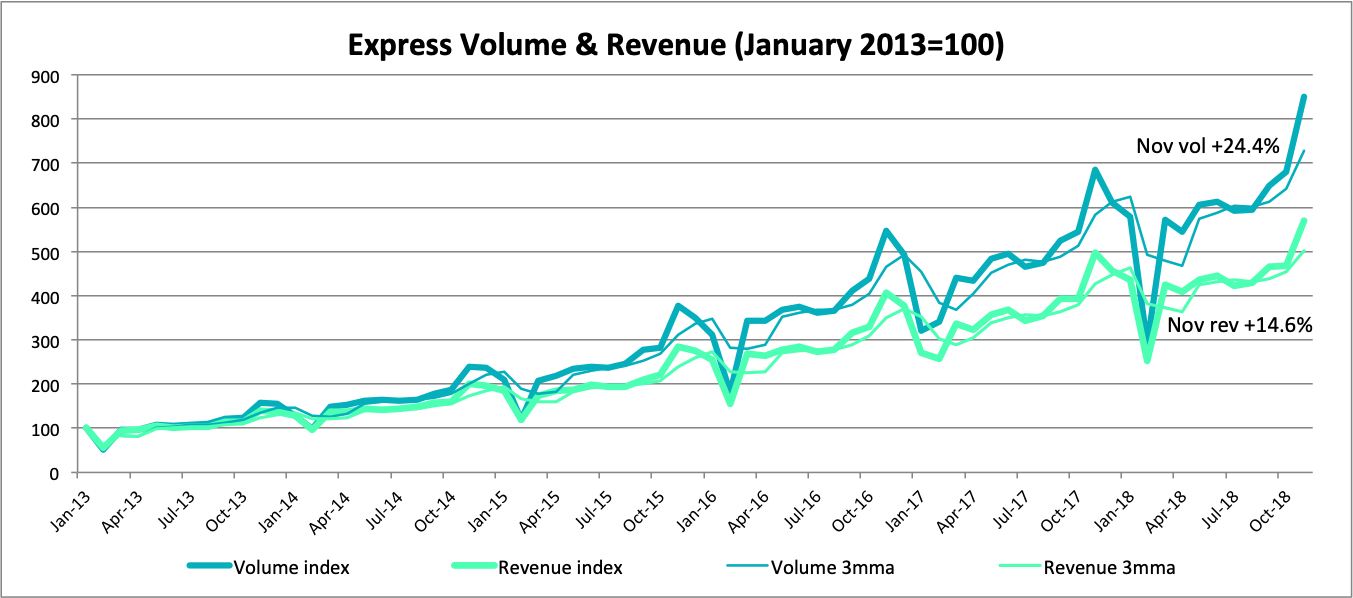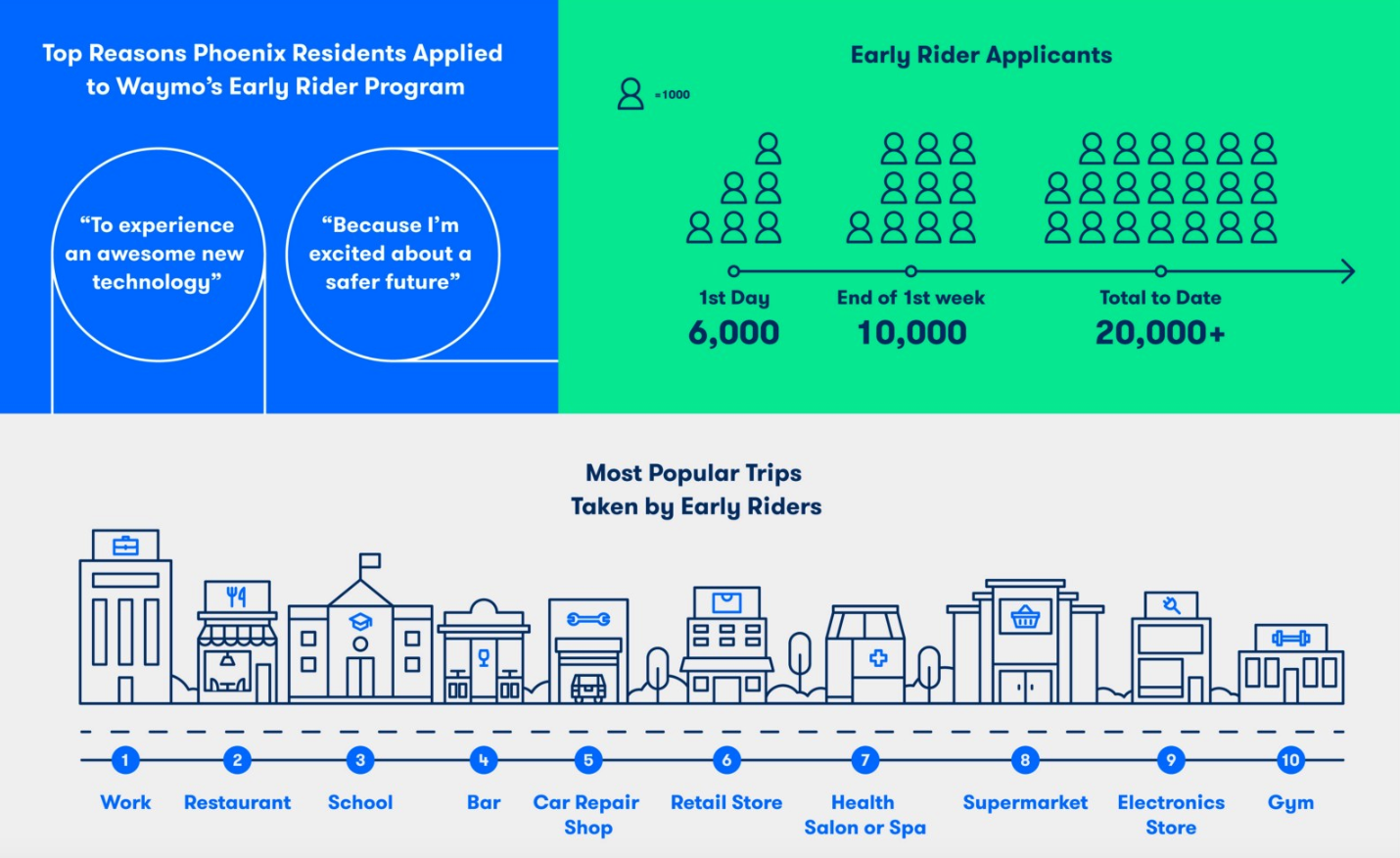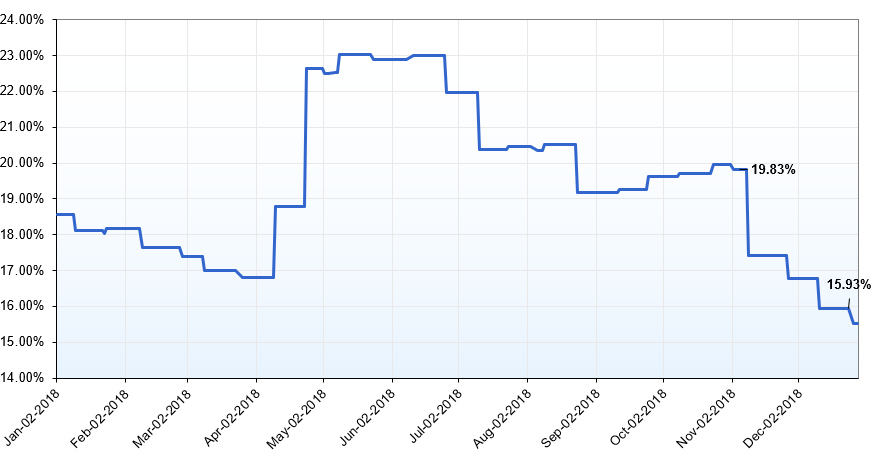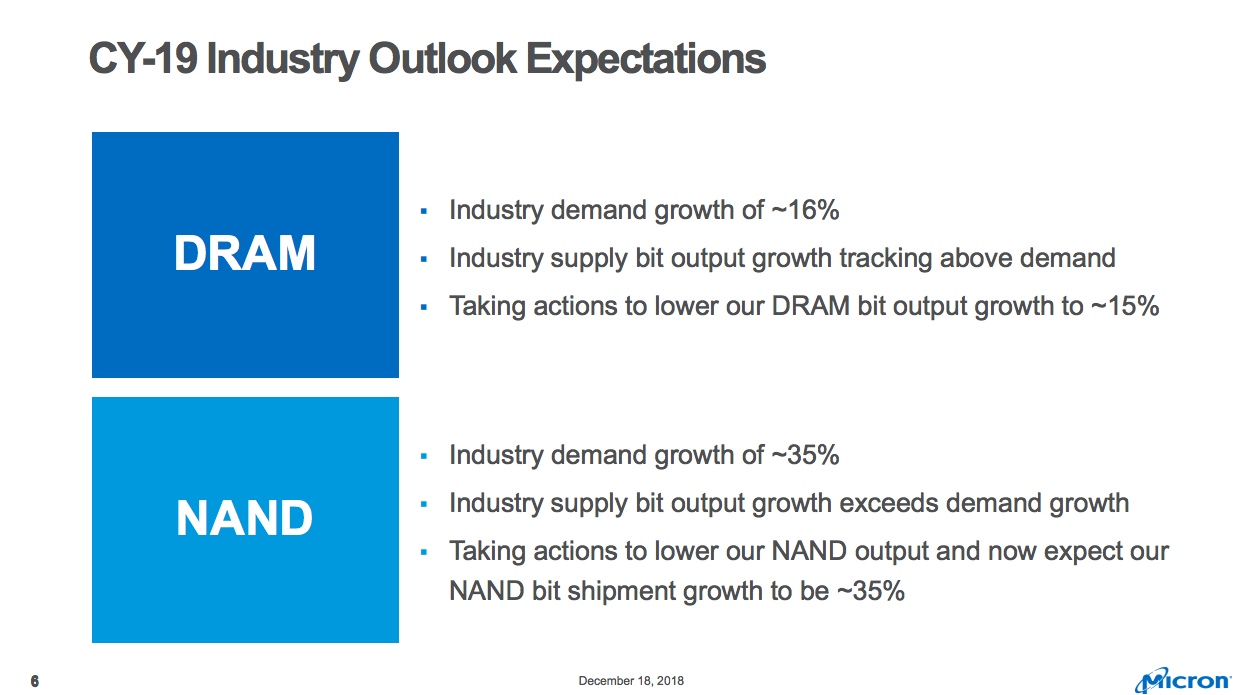
In this briefing:
- Reality Check 2019: What Premium Does Thanachart Deserve from TMB’s Takeover?
- Last Week in Event SPACE: Harbin Electric, MYOB, TMB Bank, Halla Holdings
- Are US Stocks A Buy Yet?
- Monthly Geopolitical Comment: Redrafting of Global Map of Political Alliances to Continue in 2019
- The Four Vulnerabilities in Thai Property
1. Reality Check 2019: What Premium Does Thanachart Deserve from TMB’s Takeover?

As the merger between TMB and Thanachart gets a nudge from the Ministry of Finance and could be finalized this month, we try to answer a few questions in this review:
- Takeover premium. Based on our estimates, the potential improvements in ROE from the merger and potential divestment of MBK, we think it justifies an Bt11.1/sh premium for Thanachart. The new best case price target for Thanachart stands at Bt64.25/sh, implying a 29% premium over current share price.
- Negotiations will play a key role in the actual takeover price. We provide a table of how much money is left on the table for TMB if they acquire TCAP at lower than what we expect.
- Benefits. Thanachart has a higher ROE than TMB and appears smaller but better managed. The merger would allow TMB to re-enter the securities business (more cross-selling), enlarge its asset management franchise, and scale up deposit base for both banks…more so on the Thanachart side.
- Size. Even after the merger, the combined bank would still have a much smaller headcount than BAY, smallest of the five largest Thai banks. However, it would have more branches than BAY and just 11% less branches than KBANK.
2. Last Week in Event SPACE: Harbin Electric, MYOB, TMB Bank, Halla Holdings

Last Week in Event SPACE …
- Just how will Harbin Electric Co Ltd H (1133 HK)‘s independent directors justify recommending an Offer to shareholders at a price which gave cash less cavalier than cash?
- MYOB Group Ltd (MYO AU)‘s directors grudgingly yet understandably enter an agreed deal with KKR.
- A TMB Bank PCL (TMB TB) / Thanachart Capital (TCAP TB) courtship is a possibility after an earlier Krung Thai Bank Pub (KTB TB) /TMB alliance failed.
(This insight covers specific insights & comments involving Stubs, Pairs, Arbitrage, share Classification and Events – or SPACE – in the past week)
M&A – ASIA-PAC
As previously discussed in Harbin Electric Expected To Be Privatised, Harbin Electric (HE) has now announced a privatisation Offer from parent and 60.41%-shareholder Harbin Electric Corporation (“HEC”) by way of a merger by absorption. The Offer price of $4.56/share, an 82.4% premium to last close, is bang in line with that paid by HEC in January this year for new domestic shares. The Offer price has been declared final.
- Of note, the Offer price is a 37% discount to HE’s net cash of $7.27/share as at 30 June 2018. Should the privatisation be successful, this Offer will cost HEC ~HK$3.08bn, following which it can pocket the remaining net cash of $9.3bn PLUS the power generation equipment manufacturer business thrown in for free.
- On pricing, “fair” to me would be something like the distribution of net cash to zero then taking over the company on a PER with respect to peers. That is not happening. It will be difficult to see how independent directors (and the IFA) can justify recommending an Offer to shareholders at any price below the net cash/share, especially when the underlying business is profit-generating.
- Dissension rights are available, however, there is no administrative guidance on the substantive as well as procedural rules as to how the “fair price” will be determined under PRC and HK Law.
- Trading at a gross/annualised spread of 15%/28% assuming end-July completion, based on the average timeline for merger by absorption precedents. As HEC is only waiting for approval from independent H-shareholders suggests this transaction may complete earlier than precedents.
(link to my insight: Harbin Electric: The Price Is Not Right)
KKR and MYOB entered into Scheme Implementation Agreement (SIA) at $3.40/share, valuing MYOB, on a market cap basis, at A$2bn. MYOB’s board unanimously recommends shareholders to vote in favour of the Offer, in the absence of a superior proposal. The Offer price assumes no full-year dividend is paid.
- On balance, MYOB’s board has made the right decision to accept KKR’s reduced Offer. The argument that MYOB is a “known turnaround story” is challenged as cloud-based accounting software providers Xero Ltd (XRO AU) and Intuit Inc (INTU US) grab market share. This is also reflected in MYOB’s forecast 7% revenue growth in FY18 and follows a 10% decline in first-half profit, despite a 61% jump in online subscribers.
- And there is justification for KKR’s lowering the Offer price: the ASX is down 10% since KKR’s initial tilt, the ASX technology index is off by ~14%, a basket of listed Aussie peers are down 17%, while Xero, the most comparable peer, is down ~20%. The Scheme Offer is at a ~27% premium to the estimated adjusted (for the ASX index) downside price of $2.68/share.
Bain was okay selling at $3.15/share to KKR and will be fine selling its remaining ~6.5% stake at $3.40. Presumably, MYOB sounded out the other major shareholders such as Fidelity, Yarra Funds Management, Vanguard etc as to their read on the revised $3.40 offer, before agreeing to the SIA with KKR.
If the markets avoid further declines, this deal will probably get up. If the markets rebound, the outcome is less assured. This Tuesday marks the beginning of a new year and a renewed mandate for investors to take risk, especially an agreed deal; but the current 5.3% annualised spread is tight.
(link to my insight: MYOB Caves And Agrees To KKR’s Reduced Offer)
TMB Bank PCL (TMB TB) (Mkt Cap: $1.2bn; Liquidity: $7mn)
The Ministry of Finance, the major shareholder of TMB, confirmed that both Krung Thai Bank Pub (KTB TB) and Thanachart Capital (TCAP TB) had engaged in merger talks with TMB. Considering an earlier KTB/TMB courtship failed, it is more likely, but by no means guaranteed, that the deal with Thanachart will happen. Bloomberg is also reporting that Thanachart and TMB want to do a deal before the next elections, which is less than two months away.
- TMB is much bigger than Thanachart and therefore it may boil down to whether TMB wants to be the target or acquirer. In Athaporn Arayasantiparb, CFA‘s view, a deal with Thanachart would leave TMB as the acquirer rather than the target. But Thanachart’s management has a better track record than TMB.
- Both banks have undergone extensive deals before this one: 1) TMB acquired DBS Thai Danu and IFCT; and 2) Thanachart engineered an acquisition of the much bigger, but struggling, SCIB.
- A merger between the two would still leave them smaller than Bank Of Ayudhya (BAY TB) and would not change the bank rankings; but it would give TMB a bigger presence in asset management, hire-purchase finance and a re-entry into the securities business.
(link to Athaporn’s insight: Sathorn Series M: TMB-Thanachart Courtship)
STUBS/HOLDCOS
Halla Holdings (060980 KS) / Mando Corp (204320 KS)
Mando accounts for 45% of Halla’s NAV, which is currently trading at a 50% discount. Sanghyun Park believes the recent narrowing in the discount may be due to the hype attached to Mando-Hella Elec, which he believes is overdone; and recommends a short Holdco and long Mando. Using Sanghyun’s figures, I see the discount to NAV at 51%, 2STD above the 12-month average of ~47%.
(link to Sanghyun’s insight: Halla Holdings Stub Trade: Downwardly Mean Reversion in Favor of Mando)
SHARE CLASSIFICATIONS
- LG Chem Ltd (051910 KS)‘s 1P is now at a 44.20% discount to Common. The dividend will be the same as last year of ₩6,000 despite lower earnings. The dividend yield for Common will be 1.68%, and 3.03% for 1P or a dividend yield difference of 1.35%, a four-year high. (link to Sanghyun’s insight: LG Chem Share Class: Another Pref to Watch as Div Yield Gap at 4Y High)
OTHER M&A UPDATES
Glow Energy Pcl (GLOW TB). In a strange twist to the tale, the ERC agrees to approve Global Power Synergy Company Ltd (GPSC TB)‘s takeover of Glow under a revised plan in which they have to: 1) sell Glow SPP1, a power plant with 124MW capacity and 90 tons/hr of steam; and 2) allow clients such as Pa Daeng to change providers. This will reduce Glow’s market share within the MapTaPhut area, but Athaporn Arayasantiparb, CFA thinks the purchase price (Bt139bn according to Bangkok Post) will have to be revised downwards too. For more on the original deal, see Deal Alert! GPSC Goes For the Jugular! and Anti-Trust Should Be A Non-Issue In The GPSC/Glow Deal.
- Unisem (M) (UNI MK). The Offer is now unconditional and will remain open to acceptances until the 7 January 2019.
- Stanmore Coal (SMR AU). The offer has been extended until the 22 January 2019.
CCASS
Often these moves can easily be explained – the placement of new shares, rights issue, movements subsequent to a takeover, amongst others. For those mentioned below, I could not find an obvious reason for the CCASS move.
Name | % change | Into | Out of | Comment |
Putian Communication (1720 HK) | 69.75% | Shanghai Pudong | Outside CCASS | |
37.68% | China Industrial | Outside CCASS | ||
16.23% | HSBC | Outside CCASS |
3. Are US Stocks A Buy Yet?

- 5%-like rallies on Wall Street are signs of a bear market not a bull market
- Bull markets require strong liquidity and low risk appetite, neither yet apply
- Risk appetite readings at minus 12.6 are still above the minus 40 criterion for an upturn
- Recent large fall in risk appetite consistent with upcoming economic recession
4. Monthly Geopolitical Comment: Redrafting of Global Map of Political Alliances to Continue in 2019
The year 2018 has proven tumultuous for global markets. Rapidly changing geopolitical priorities of the US, an erstwhile hegemon, have played a role no less significant than the withdrawal of liquidity by leading central banks or US monetary policy tightening. The US has openly declared that it is in a state of “cold war” with China. Despite the recent truce, signs are abundant that the confrontation between the two global superpowers will continue into 2019 and beyond. In 2019, we expect more countries to find themselves in a position where they must choose who they want to side with, the US or China. There are other tectonic shifts, too, which are causing re-alignment of global geopolitical alliances.
5. The Four Vulnerabilities in Thai Property

As the year closes, developers from giant AP to SC Asset have been warning markets about a downturn in the property market in 2019, and the world is no stranger to the interlinks between economic crisis and property sector. There are four reasons why they might be right to be so bearish:
- Banks Rejection rates for mortgages have been on the rise. Yet, few credible developers get rejected, because banks have a preference for corporate loans. This means they are effectively supporting the supply side without demand.
- New financing methods. In recent years, REIT IPOs have become very popular, increasing the amount of financing available to developers. But what of the demand side? Slower wage growth, wealth concentration at the top, rising unemployment.
- Higher interest rates. While the BOT has resisted rate hikes, they have finally capitulated this month. High rates, lower affordability.
- Regulations. A cap on loans-to-value ratio at 80% further limits the mortgage availability, but who’s limiting supply?
























